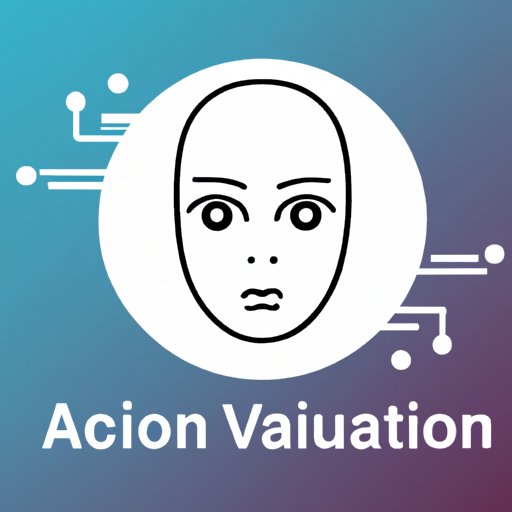Introduction
Artificial intelligence (AI) has revolutionized the way we interact with machines and technology. One of the most important subfields of AI is AI vision, which focuses on computer vision and image processing. AI vision is a powerful tool that enables machines to recognize, analyze, and interpret images and videos. In this article, we’ll explore what AI vision is, how it works, its benefits, and its potential applications.
What is AI Vision and How Does it Work?
AI vision is a branch of AI that focuses on computer vision. Computer vision involves using computers to understand and interpret images and videos, while image processing refers to the manipulation of digital images. AI vision combines these two concepts in order to enable machines to “see” and interpret visual data.
To do this, AI vision relies on three main components: sensors, algorithms, and software. Sensors are used to capture visual data, such as images or videos. Algorithms are used to process this data and identify patterns or objects. Finally, software is used to interpret and act on the data, such as by recognizing faces or objects. By combining these components, AI vision is able to interpret visual data and make decisions based on it.
The benefits of AI vision are numerous. For businesses, AI vision can be used to automate processes, improve efficiency, and reduce costs. For consumers, AI vision can be used to enhance user interfaces and provide more accurate facial recognition. In addition, AI vision can help improve human-computer interaction by enabling machines to better understand visual data.
Exploring the Benefits of AI Vision for Businesses
AI vision offers a number of benefits for businesses. One of the most significant benefits is improved efficiency. AI vision can be used to automate tedious tasks and streamline processes, reducing the time and effort required to complete them. This can lead to a more efficient workflow, freeing up employees to focus on more important tasks.
AI vision also offers the benefit of automation. By automating certain tasks, businesses can reduce the amount of manual labor required and increase accuracy. This can result in higher quality products and services, as well as cost savings through increased productivity.
Finally, AI vision can help businesses save money. By automating processes and improving efficiency, businesses can reduce their overhead costs. Additionally, AI vision can be used to identify problems and suggest solutions, helping businesses optimize their operations and reduce waste.
How AI Vision Can Help Improve Human-Computer Interaction
AI vision can also help improve human-computer interaction. By understanding visual data, machines can better interact with humans. For example, AI vision can be used to recognize facial expressions and gestures, enabling machines to respond appropriately. This can help machines understand humans better and improve the overall user experience.
AI vision can also be used to enhance user interfaces. By recognizing objects and scenes, machines can suggest relevant information or actions to users. This can provide a more intuitive and engaging experience, as well as reduce the need for manual input from users.
Finally, AI vision can enable more accurate facial recognition. By analyzing facial features, machines can more accurately identify individuals and verify their identity. This can have a wide range of applications, from security systems to social media.
A Deep Dive into AI Vision: Technology, Algorithms, and Applications
To gain a better understanding of AI vision, it’s important to look at the technology, algorithms, and applications involved. AI vision relies on machine learning algorithms to process visual data. These algorithms are trained on large datasets and use pattern recognition to identify objects and scenes. Additionally, AI vision utilizes computer vision technologies, such as object detection and segmentation, to interpret visual data.
AI vision has a wide range of applications. It can be used for security and surveillance, facial recognition, medical imaging, autonomous vehicles, and more. AI vision can also be used to enhance existing applications, such as search engines or social media.

A Look at the Future of AI Vision: Potential Opportunities and Challenges
As AI vision continues to advance, there are both opportunities and challenges ahead. Advancements in AI vision could lead to more accurate and efficient systems, as well as new applications. Additionally, the adoption of AI vision could lead to increased safety and security, as well as improved user experiences.
However, there are also ethical considerations to take into account. As AI vision becomes more sophisticated, there is a risk of bias and privacy concerns. Additionally, the use of AI vision could lead to job displacement and inequality. It’s important to consider these issues when exploring the future of AI vision.
Conclusion
AI vision is a powerful tool that can be used to automate processes, improve efficiency, and reduce costs. It has a wide range of applications, from security and surveillance to facial recognition and medical imaging. As AI vision continues to advance, it’s important to consider the potential opportunities and challenges ahead.
(Note: Is this article not meeting your expectations? Do you have knowledge or insights to share? Unlock new opportunities and expand your reach by joining our authors team. Click Registration to join us and share your expertise with our readers.)
